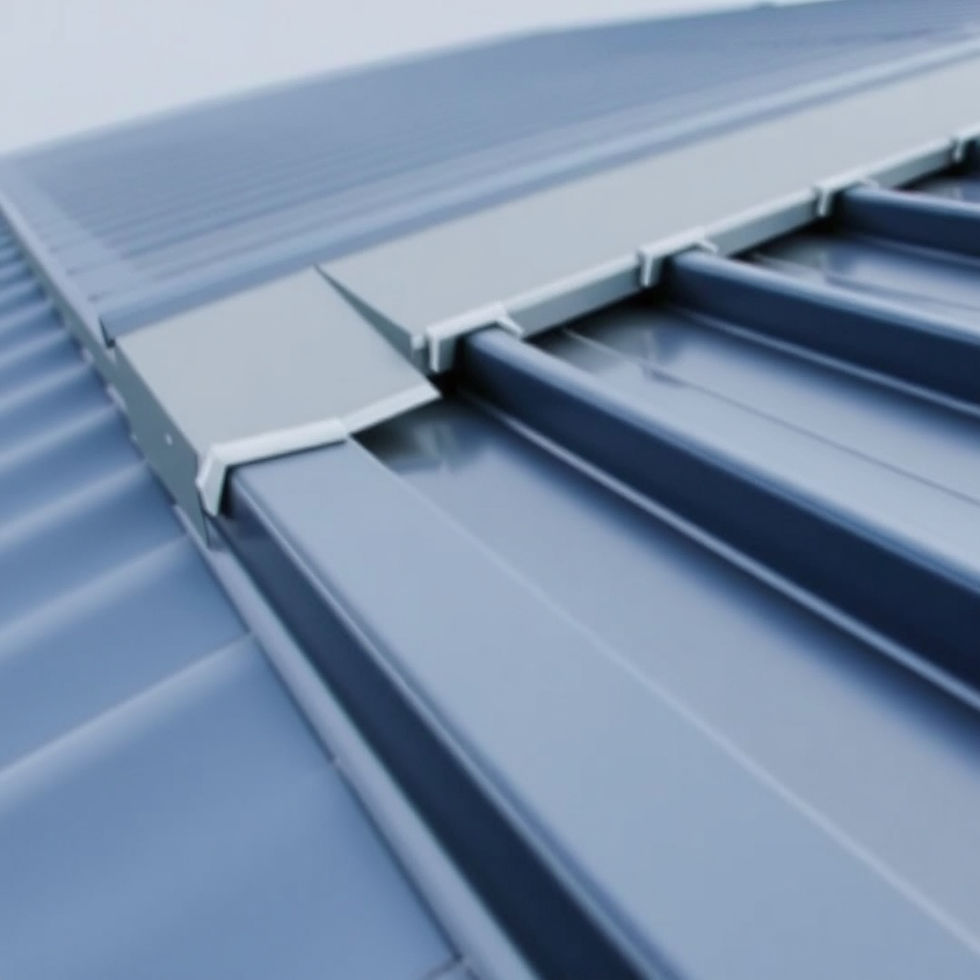A Complete Guide to Choosing the Right Roofing Material for Your Home
- Vanshika Thareja

- Nov 3
- 4 min read
Selecting the ideal roofing material for your home is more than just a stylistic decision; it’s an investment in protection, efficiency, and long-term value. The right roof shields your home from the elements, enhances curb appeal, and plays a critical role in energy conservation. But with so many options on the market, from traditional asphalt shingles to advanced synthetic solutions, it can be difficult to determine what’s best for your climate, budget, and architectural style.
Whether you're building a new home or replacing an aging roof, understanding the key attributes of various materials can help you make a confident, informed choice.

Understand Your Needs and Priorities
Every home is different, and the perfect roofing solution for one homeowner may not suit another. Start by identifying your top priorities: is your primary concern durability, aesthetics, environmental impact, or budget?
If you live in an area prone to storms or high winds, materials like metal or architectural shingles may offer the resilience you need. If energy efficiency is critical, look into reflective roofing options that reduce solar heat absorption. Homes in coastal areas may benefit from materials that resist corrosion and moisture intrusion. Before you choose your roofing brand, consider factors such as warranty coverage, installation complexity, and regional performance data. Local roofing contractors can provide insights based on years of experience with specific materials in your area.
Explore Popular Roofing Material Options
Each roofing material has its own pros and cons in terms of lifespan, cost, and performance. Understanding these basics will help narrow your options.
Asphalt Shingles
These are the most common residential roofing materials due to their affordability and ease of installation. They come in a variety of colors and styles, including standard 3-tab and more durable architectural shingles. Asphalt shingles typically last 15 to 30 years.
Metal Roofing
Metal roofs, made from steel, aluminum, or copper, are prized for their longevity, often lasting 40 to 70 years. They resist fire, wind, and pests and are recyclable. They may require a higher upfront cost and professional installation.
Clay or Concrete Tiles
These heavy-duty materials offer exceptional durability and a distinct look for Mediterranean or Spanish-style homes. They can last up to 50 years or more, but may require additional roof reinforcement due to their weight.
Wood Shingles and Shakes
Wood roofs provide a natural, rustic appearance. Cedar is a popular choice for its resistance to insects and decay. They are less fire-resistant (unless treated) and typically require more maintenance.
Slate
Slate is a premium roofing material that can last over a century. It’s fire-resistant, low maintenance, and offers timeless beauty, but it’s expensive and requires skilled installation due to its weight and fragility.
Synthetic Roofing
Made from rubber, plastic, or polymer composites, synthetic shingles can mimic the look of slate or wood while offering better impact resistance and lower weight. Many come with long warranties and require minimal upkeep.
Factor in Climate and Environmental Considerations
Your local climate should play a major role in your roofing decision. For example, homes in hot, sunny regions may benefit from reflective roofing materials that deflect sunlight and reduce air conditioning costs. Colder climates may call for materials that shed snow easily and resist freeze-thaw damage.
Fire-prone areas demand Class A fire-rated materials, like metal or fiberglass-based asphalt shingles. Areas prone to hurricanes or heavy rainfall need water-resistant systems with excellent wind uplift ratings.
Some homeowners may opt for eco-friendly options such as recycled-content roofing, solar-integrated systems, or green (vegetated) roofs. These reduce environmental impact and, in some cases, qualify for local or federal incentives.
Evaluate Maintenance and Longevity
Some roofing materials are nearly maintenance-free, while others require regular inspections, cleaning, and occasional repairs. Knowing how much effort (and cost) is involved in maintaining your roof can help you avoid future headaches.
For example, metal and slate roofs often demand little maintenance, whereas wood shakes may need treatment every few years to prevent rot or insect damage. Asphalt shingles fall somewhere in the middle; they’re easy to replace but can suffer from algae growth or granule loss.
Don’t Overlook Curb Appeal and Home Style
While functionality is crucial, your roof’s appearance significantly affects your home’s visual appeal and market value. The right material and color can enhance architectural features and create a cohesive look with the exterior siding, trim, and landscaping.
Consider how certain materials pair with specific home styles. For instance, slate complements colonial and historic homes, while metal looks sharp on modern farmhouses or contemporary designs. A mismatched roof can clash with the rest of the home and detract from its charm.
Work with a Reputable Roofing Contractor
Once you've narrowed down your material options, the next step is choosing a qualified roofing contractor. A professional installer ensures that your roof meets all code requirements and performs as expected over the years.
Check credentials, licensing, and insurance before signing any contract. Ask for references and confirm experience with the specific material you’ve chosen. Proper installation is just as important as material quality; skimping here can lead to leaks, inefficiency, or voided warranties.



Comments